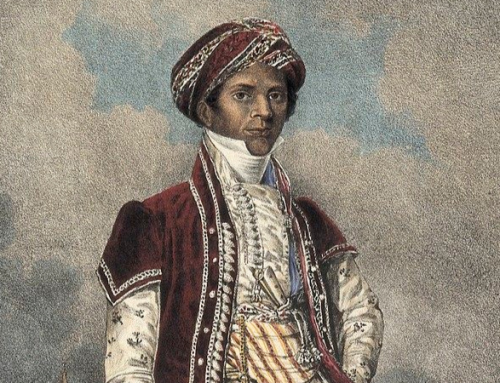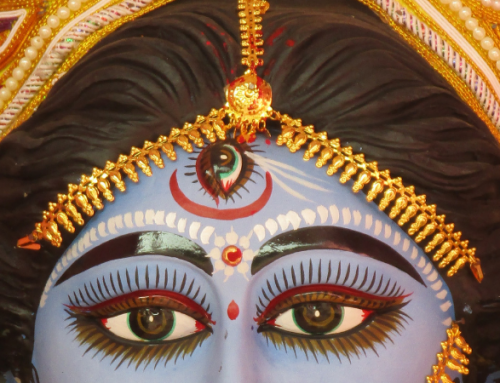Navaratri Begins Today
Immediately following the “All-Ancestor New Moon” which marks the end of the Forefather Fortnight begins Durga Puja, the period during which the Divine Mother is adored. As this veneration transpires over a period of ten days and nine nights it is popularly known as navaratri (nava = nine & ratri = night). One such period arrives each month, but the year’s most important navaratris mark the start of the spring and of autumn seasons, and emphasize the year’s two equinoxes. Change being thus the hallmark of this festival, Navaratri offers individuals opportunities for self-transformation, particularly now that potentially detrimental ancestral influences have been (however temporarily) subdued.
Over the course of those nine nights as the moon waxes in visibility, light, and juiciness the serious seeker will strive to make his or her mind do likewise (the moon being the external representative of the mind), with the aid and under the care of the Great Goddess (the moon being archetypically female). While the transcendent, all-pervasive, totipotent, all-powerful Supreme Shakti, the cosmic creative energy, is rightly known as Durga, “She Who Is Difficult to Attain”, Her embodiment as God-as-Mother makes Her as well an “Impregnable Stronghold” (also Durga) for her children. Reverence for the Motherhood of God pervades all of India, where She has been saluted as Creator, Preserver and Destroyer, All-in-One, for centuries by ordinary people and great saints (including particularly Ramakrishna Paramahamsa) alike. She welcomes all, saints and sinners alike, to Her bosom, where She protects and nurtures them as they seek to navigate the complexities of worldly existence.
Navaratri was for my mentor Vimalananda an opportunity to focus one-pointedly on surrendering to Her will while sitting on Her lap drinking in the milk of her Might. Like many others of Ma’s ardent devotees he would impose strong limitations on himself as he sat night after night endeavored to dissolve himself in Her love. During the autumnal Navaratri Durga’s innumerable names and forms and incalculable powers are feted in diverse ways in different Indian cultures, most popularly according to the scripture known variously as the Devi Mahatmya, Durga Sapta Shati or Chandi Patha. Multifarious are the methods of celebration, many involving the establishment (sthapana) of a pot (ghata) on the festival’s first night (called, appropriately, Ghata Sthapana) as the residence of Devi for the duration of the celebration, around which food grains are sown and allowed to sprout and burgeon as the nights go by, simultaneously symbolizing and embodying Devi’s ability to engender growth.
Over much of North India, in particular in Benaras (also known as Kashi, or Varanasi), where I am at the moment sitting watching the rising sun paint a golden stripe on Ganga, the Autumnal Navaratri brings the performance of the Ramlila, a retelling of the Ramayana that climaxes with the slaying of Ravana by Rama on the tenth and final day, Vijaya Dashami (the “Triumphant Tenth”), which was also the day on which Durga slew Mahishasura, the Buffalo Demon. May the Divine Mother continue thus to protect us, in every way!
Jai Ma!


